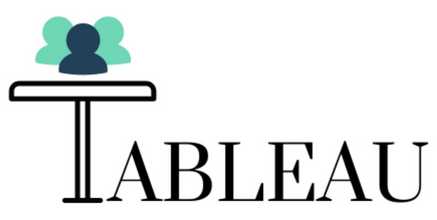Understanding the Terminology
Navigating the landscape of human sexuality can be complex, especially when encountering terms like “polysexual” and “pansexual.” While both identities celebrate attraction to multiple genders, subtle distinctions exist that are crucial for accurate understanding and respectful communication.
Defining Polysexuality
Polysexuality is an identity characterized by romantic or sexual attraction to multiple genders, excluding a binary view of male and female. Individuals who identify as polysexual may be attracted to men, women, and other gender identities, such as non-binary individuals. The key aspect of polysexuality lies in the recognition of multiple genders beyond the traditional binary.
Defining Pansexuality
Pansexuality encompasses romantic or sexual attraction to people regardless of their gender identity or expression. Pansexual individuals are attracted to all genders, including male, female, transgender, non-binary, and genderqueer individuals. The term “pan” derives from the Greek word “pan,” meaning “all,” reflecting this expansive inclusivity.
Core Differences: Attraction Focus
Understanding the nuances of human sexuality involves exploring diverse identities and attractions. While both polysexuality and pansexuality celebrate attraction to multiple genders, they diverge in their focus.
Polysexuality and Gender Spectrum
The core difference lies in their focus. Polysexuality centers on attraction to multiple genders specifically excluding a binary view of male and female. This means polysexual individuals may be attracted to men, women, and other gender identities but do not necessarily include all genders within their attraction spectrum.
Pansexuality, on the other hand, encompasses attraction to all genders without exception. It is a more expansive concept that acknowledges and includes every gender identity in its definition of attraction.

Pansexuality and All Genders

Polysexuality and pansexuality are both identities that celebrate attraction to multiple genders. However, they differ in their focus. Polysexuality centers around attraction to multiple genders while excluding a binary view of male and female.
Pansexuality, on the other hand, encompasses attraction to all genders, regardless of their identity or expression.
Beyond Labels: Individual Experiences
Navigating the diverse landscape of human sexuality can be complex, with terms like “polysexual” and “pansexual” often used interchangeably. While both identities celebrate attraction to multiple genders, subtle distinctions exist that are crucial for accurate understanding and respectful communication.
Understanding these nuances is essential for fostering inclusivity and creating a space where individuals feel seen and understood.
Embracing Nuance
Polysexuality and pansexuality are both identities that celebrate attraction to multiple genders. However, they differ in their focus. Polysexuality centers around attraction to multiple genders while excluding a binary view of male and female.
Pansexuality, on the other hand, encompasses attraction to all genders, regardless of their identity or expression.
Personal Variations Within Identities
Polysexuality is an identity characterized by romantic or sexual attraction to multiple genders, excluding a binary view of male and female. Individuals who identify as polysexual may be attracted to men, women, and other gender identities, such as non-binary individuals. The key aspect of polysexuality lies in the recognition of multiple genders beyond the traditional binary.
Pansexuality encompasses romantic or sexual attraction to people regardless of their gender identity or expression. Pansexual individuals are attracted to all genders, including male, female, transgender, non-binary, and genderqueer individuals. The term “pan” derives from the Greek word “pan,” meaning “all,” reflecting this expansive inclusivity.
The core difference lies in their focus. Polysexuality centers on attraction to multiple genders specifically excluding a binary view of male and female. This means polysexual individuals may be attracted to men, women, and other gender identities but do not necessarily include all genders within their attraction spectrum.
Pansexuality, on the other hand, encompasses attraction to all genders without exception. It is a more expansive concept that acknowledges and includes every gender identity in its definition of attraction.
Understanding these nuances is essential for fostering inclusivity and creating a space where individuals feel seen and understood.
Cultural Context and Evolution of Terms
Language is constantly evolving, shaped by cultural shifts and the experiences of diverse communities. Terms related to human sexuality are no exception, with meanings and interpretations adapting over time. This evolution can lead to ambiguity and misunderstandings, particularly when exploring nuanced concepts like polysexuality and pansexuality.

Shifting Understandings Over Time
Language is constantly evolving, shaped by cultural shifts and the experiences of diverse communities. Terms related to human sexuality are no exception, with meanings and interpretations adapting over time. This evolution can lead to ambiguity and misunderstandings, particularly when exploring nuanced concepts like polysexuality and pansexuality.
Historically, societal norms often confined understandings of gender and attraction within a binary framework. Over time, as awareness and acceptance of diverse gender identities have grown, so too has the need for more inclusive language. Terms like “polysexual” and “pansexual” emerged to reflect these evolving understandings.
As with any evolving term, there can be variations in how individuals understand and use them. What might be considered a definitive definition by one person may not resonate with another. This underscores the importance of open communication, active listening, and respectful dialogue when discussing sensitive topics like sexual orientation and identity.
Ultimately, striving for clarity and mutual understanding is key. Encouraging individuals to share their own experiences and perspectives can contribute to a richer understanding of these evolving concepts and foster a more inclusive environment.
Influence of Social Movements
Language is constantly evolving, shaped by cultural shifts and the experiences of diverse communities. Terms related to human sexuality are no exception, with meanings and interpretations adapting over time. This evolution can lead to ambiguity and misunderstandings, particularly when exploring nuanced concepts like polysexuality and pansexuality.
Historically, societal norms often confined understandings of gender and attraction within a binary framework. Over time, as awareness and acceptance of diverse gender identities have grown, so too has the need for more inclusive language. Terms like “polysexual” and “pansexual” emerged to reflect these evolving understandings.
- Social movements advocating for LGBTQ+ rights played a pivotal role in expanding linguistic vocabulary and challenging traditional notions of gender and sexuality.
- The rise of online communities and social media has also contributed to the evolution of language surrounding sexuality, providing platforms for sharing experiences, discussing identities, and refining terminology.
As with any evolving term, there can be variations in how individuals understand and use them. What might be considered a definitive definition by one person may not resonate with another. This underscores the importance of open communication, active listening, and respectful dialogue when discussing sensitive topics like sexual orientation and identity.
Ultimately, striving for clarity and mutual understanding is key. Encouraging individuals to share their own experiences and perspectives can contribute to a richer understanding of these evolving concepts and foster a more inclusive environment.
luxury sex toys
Tableau Consulting
The Desert Box
- Collagen Induction For Loose Skin In Ashtead, Surrey - September 19, 2025
- How To Prevent Swelling After Lip Filler - September 19, 2025
- CBD Gummy Sweets For Pain Management Tips And Tricks - September 17, 2025
